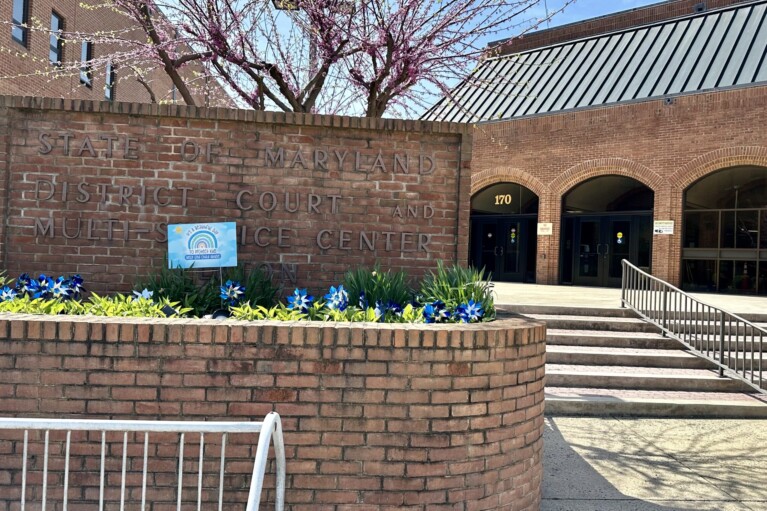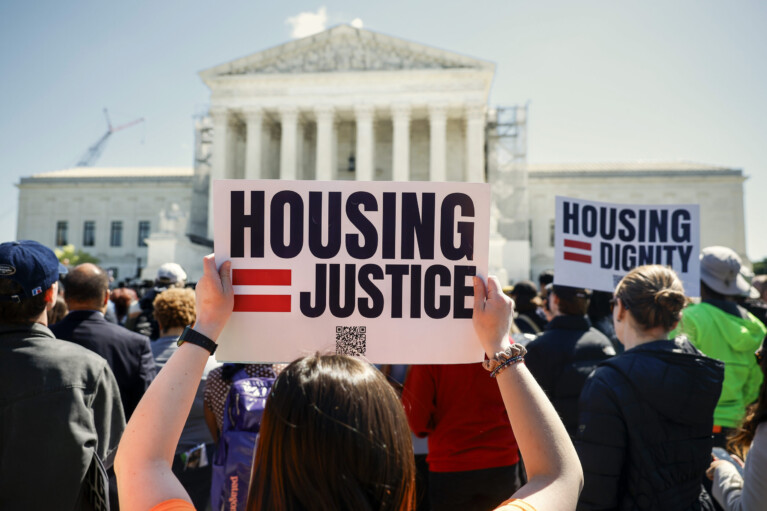Justices on the Supreme Court questioned whether the Bladensburg Peace Cross is a religious symbol that must be removed or defended as a secular memorial to soldiers lost in World War I.
Oral arguments were heard Wednesday over the constitutionality of the 40-foot-tall cross that has stood on public land in Prince George’s County for nearly a century.
Justice Ruth Bader Ginsburg said “the Latin cross is the preeminent symbol of Christianity.”
“People wear crosses to show their devotion to the Christian faith,” she said.
Justice Brett Kavanaugh agreed, saying the cross is undeniably religious in nature.
A significant portion of the arguments was taken up with legal analyses of the type of tests the high court has used in the past and should use in the future to determine if a public memorial is religious or secular in nature.
When Neal Katyal, representing the American Legion, argued that the cross is a part of a memorial park, Sotomayor countered by pointing out that the memorial is in the middle of a major highway and you “can’t really tell that this cross is with anything else.”
Michael Carvin, also representing the American Legion, attempted to use the cross’s “long-standing tradition” as a reason for it to remain.
“I don’t know of a founding father, town or state that put up a 40-foot cross,” Justice Sonia Sotomayor responded.
Justice Elena Kagan questioned attorneys on whether the cross “indicated that the city was aligning itself to a specific religion.”
Kagan also pressed Monica Miller, the attorney representing the American Humanist Association, which opposes the cross.
She and Justice Samuel Alito both asked Miller why this particular cross could not be stripped of its religious significance, citing the Ten Commandments as an example of a religious symbol taking on a secular meaning.
Katyal argued that the cross has taken on a secular identity in the context of World War I memorials.
Miller said the cross is a prime example of a government acting as a “mouthpiece” for a religion. She said there were many reasons why minorities, back when the memorial was built, did not feel safe in objecting to its form, citing instances of Ku Klux Klansmen in the area silencing those who practiced religions other than Christianity.
Justice Samuel Alito asked Miller what message the court would send if justices ruled against keeping the cross. She said that removing it would restore the court to a place of neutrality.
American Humanist Association members Steven Lowe and Fred Edwords were happy with how Miller argued the case.
“I think we answered the questions a little bit better than our opponents in some respect,” Miller said. Lowe agreed, saying that he was very “proud” of how she represented them.
“The three women of the court were our best advocates,” Lowe said of Ginsburg, Kagan and Sotomayor.
Kevin Bartlett, the legal counselor for the American Legion, which has its symbol on the cross, said that the whole case is a “slap in the face” to veterans.
“Nobody cared about religion when I signed up,” said Bartlett, a Navy veteran. “We have to protect these memorials.”
This CNS report was written by Eugene “Jesse” Nash IV and Victoria Gomes-Boronat.




 Creative Commons Attribution
Creative Commons Attribution